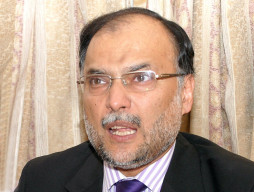
KARACHI: Pakistan is getting closer to a default-like situation as its foreign currency reserves have dropped to a critically low level of $9.06 billion that can cover only one and a half month of imports.
The measures the previous Pakistan Muslim League-Nawaz (PML-N) government and the current caretaker set-up have taken are only for short and medium term whereas long-term solutions are conspicuously absent from economic planning.
The rapid fall in reserves has come in the wake of heavy expenditures, mainly on imports and debt repayment and servicing, as well as sluggish receipts from exports and almost stagnant growth in worker remittances.
To narrow down the gap, the government has made the dollar expensive by letting the rupee depreciate by a massive 22% in the past seven months, imposed regulatory duty on the import of over 300 goods and extended the Rs180-billion export package for another year.
Apart from these, the central bank has made borrowing expensive by increasing the benchmark interest rate by 175 basis points to 7.5% over the past six months.
Recent reports suggest the caretaker government is also preparing to increase customs duty by up to one percentage point on all imports, except for medicines and raw material, or jack up regulatory duty on 1,550 goods.
In an attempt to shore up the foreign currency reserves, the government has also begun the process of seeking a bailout package from the International Monetary Fund (IMF) to enable the incoming government to move quicker if it chooses to exercise the option.
Going back to the IMF is a medium-term solution as Pakistan has received 12 bailouts since the 1980s, but the problem has emerged again and again due to absence of long-term measures targeted at boosting the country’s revenue stream.
Only one long-term measure aimed at controlling illegal dollar outflow under the anti-money laundering (AMT) and combating the financing of terrorism (CFT) laws has been taken under growing international pressure following the placing of Pakistan on the Financial Action Task Force’s (FATF) grey list.
Long-term solutions
Promoting swift industrialisation, a substantial increase in exports by finding new markets, export product diversification by looking beyond textile goods, curbing under/over-invoicing in foreign trade, renegotiating free trade agreements in Pakistan’s favour and investing in skill development of human resources are a few long-term solutions.
These are essentially needed in a bid to increase the country’s productivity, foreign income and stabilise the foreign currency reserves.
In FY18, exports rose 13.7% to just $23.2 billion, which were less than half the imports made by the country. It booked a trade deficit of $37.7 billion in the year.
“De-industrialisation is going on (in Pakistan),” remarked the caretaker Finance Minister Dr Shamshad Akhtar, while giving a presentation on the state of economy at the Pakistan Stock Exchange about a week ago. “There is a lack of export orientation in the economy,” she said.
IMF, finance ministry way off on Pakistan’s economic misery
Elaborating, the minister said de-industrialisation had brought down the industrial output, which impacted exports of the country.
Economist Dr Kaiser Bengali highlighted the other day that the industrialisation process in Pakistan peaked during the 1960s and 70s, but stopped advancing after Ziaul Haq came to power.
Pakistan Business Council (PBC) Chief Executive Officer Ehsan Malik said in a conversation with The Express Tribune that the incoming government should immediately opt for an IMF bailout as no more viable options were left to fix the faltering economy.
Secondly, the incoming government should provide an enabling environment for industrialisation, reviving sick industrial units, investing in human resources and their skill development, and creating job opportunities, he said.
“Without these measures, the nation cannot increase its overall income and make economic growth sustainable in the long run.”
Malik pressed the authorities to renegotiate the free trade agreement (FTA) with China and control under-invoicing, especially in trade with Beijing.
“Exchange of data suggests there is an annual leakage of around $3.5 billion through under-invoicing in trade with China,” he pointed out.
The two countries had already started renegotiating the FTA, but the progress had been very slow, he said.
Size of Pakistan’s economy is $313.13 billion, says SBP
A study suggests that balance of trade in relation to the countries with which FTA has been signed has not been in favour of Pakistan.
Pakistan has been spending heavily to step up exports, diversify them and find new markets. However, the expenditure has not paid back so far and exports have remained unsatisfactory.
the writer is a staff correspondent
Published in The Express Tribune, July 23rd, 2018.
Like Business on Facebook, follow @TribuneBiz on Twitter to stay informed and join in the conversation.






















































COMMENTS
Comments are moderated and generally will be posted if they are on-topic and not abusive.
For more information, please see our Comments FAQ